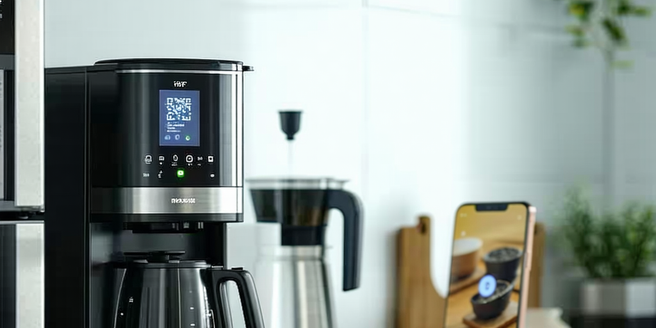Connected Appliances And Daily Living

Understanding Connected Appliances
Connected appliances, often referred to as smart appliances, are devices that can connect to the internet or other networks to provide enhanced functionality and user convenience. These appliances make use of sensors, cloud computing, and data analytics to offer improved control and efficiency. For instance, a connected refrigerator might track expiration dates or create shopping lists. The integration of voice assistants adds another layer of accessibility and ease of use. The main advantage of these devices is the ability to control and monitor them remotely via smartphones or computers, making household management easier and more efficient. As technology advances, the range and capabilities of connected appliances continue to grow, offering even greater possibilities.
Benefits of Smart Home Devices
Smart home devices offer numerous benefits that enhance daily living. One of the primary advantages is convenience. With smart devices, everything from adjusting the thermostat to turning off lights can be done with a simple voice command or a tap on your smartphone. On top of that, these devices can be programmed to perform tasks automatically, further simplifying daily routines. These devices also contribute to energy savings by optimizing electricity usage based on real-time data. Enhanced security is another key benefit, as smart locks, cameras, and sensors provide homeowners with greater control and peace of mind. Additionally, the integration capabilities of various smart devices can lead to a more synchronized and seamless living environment.
Improving Energy Efficiency with Technology
Smart technology plays a crucial role in enhancing energy efficiency within homes and businesses. Appliances such as smart thermostats and energy-efficient lighting systems utilize technology to reduce energy consumption systematically. These innovations are continually evolving to meet the growing demand for energy conservation. By learning your habits and adjusting settings accordingly, these devices minimize waste, leading to lower utility bills. Moreover, the integration of renewable energy sources can significantly enhance the impact of smart technologies. Smart grid systems further contribute by enabling better demand response and reducing peak energy loads. Additionally, data analytics from these devices help users comprehend their energy usage patterns, allowing for more informed decisions. Embracing such technologies not only conserves energy but also benefits the environment.
Enhancing Security Through Connectivity
Connectivity plays a pivotal role in enhancing the security of homes and businesses. Smart security systems, which include cameras, sensors, and alarms, are constantly connected to the internet and provide real-time monitoring and alerts. This technological advancement has revolutionized the way we protect our homes. Moreover, the integration of artificial intelligence in these systems allows for more accurate threat detection and response. This instantaneous access allows homeowners to monitor their property remotely, offering peace of mind. Additionally, smart locks and doorbell cameras can deter potential intruders through proactive alerts and two-way communication. The ability to keep track of security footage and receive instant notifications ensures that homes remain safe and secure. Thus, connectivity enhances traditional security practices.
Challenges and Considerations for Consumers
While connected appliances offer substantial benefits, they also come with challenges and considerations for consumers. Privacy and data security are chief concerns, as these devices collect and transmit personal data over the internet. Consumers need to be informed of potential risks and ensure that devices have robust security measures. It’s important for manufacturers to provide transparent information about how data is handled and protected. Compatibility between different devices and platforms can also be a hurdle, often requiring consumers to commit to a single ecosystem for seamless integration. Moreover, the initial cost of smart devices might be prohibitive for some, despite long-term savings. Educating consumers on these aspects is essential to facilitate informed decision-making.